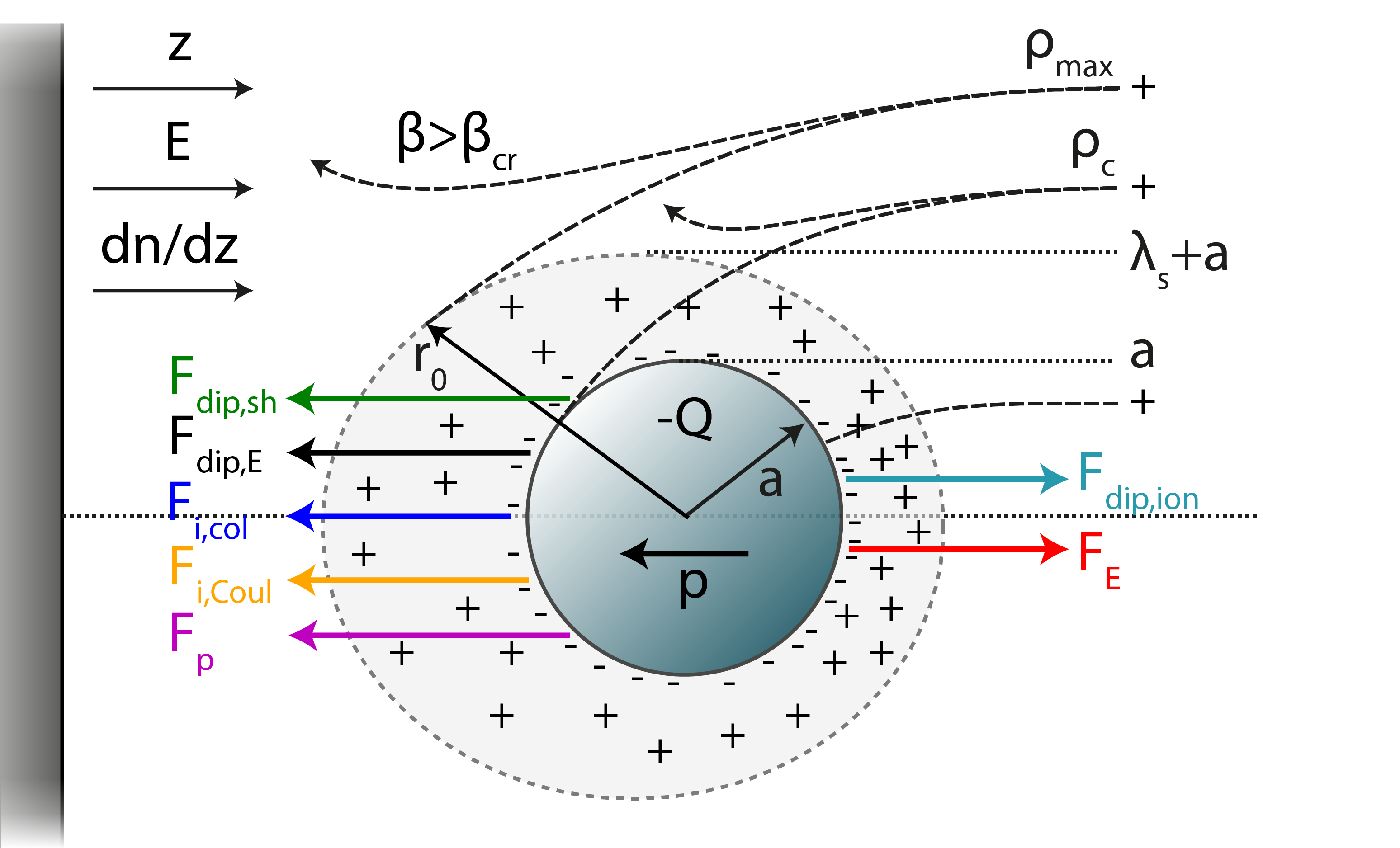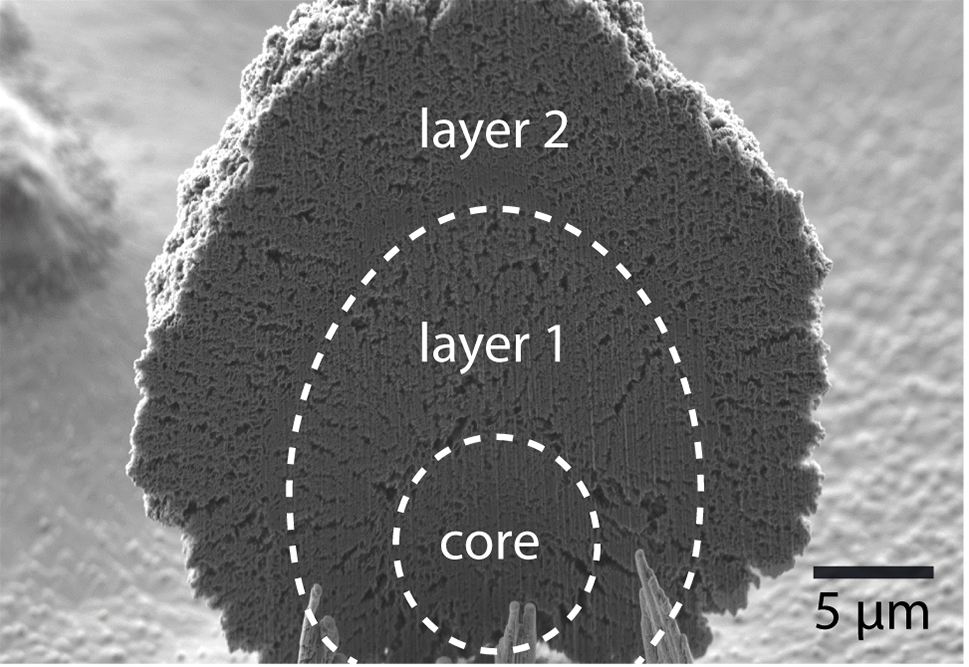The journal Physics of Plasmas has chosen the paper An analytical force balance model for dust particles with size up to several Debye lengths (Damien Aussems et al.) as editor's pick in its November 2017 issue. In the paper, Damien and colleagues detail the various forces that work on a dust grain in a plasma environment during its growth process, which enables them to explain phases in a dust particle's development.

Debye length in an anisotropic plasma
In a plasma environment, dust particles of for instance carbon experience multiple forces such as coulomb interaction, pressure and ion collection. These are detailed in the textbooks, however often with certain approximations such as being in a homogeneous part of the plasma and working with dust particles so small that they fit inside the natural screening distance of the plasma, the Debye length. This simplifies calculations, but breaks down when considering larger particles in an anisotropic plasma.
In their Physics of Plasmas paper, Damien Aussems and his colleagues worked out the full set of forces that work in these more complex conditions, such as an electrical potential and particle density that rapidly varies in the plasma near a reactor wall, or dust grains that grow beyond the Debye screening. This resulted in identifying for instance that the density gradient causes a deformation of screening around the spherically growing dust particle, which produces polarization of the particle surface charge, and consequently a dipole force that is not taken into account in the usual models.
With these newly derived forces, Aussems' team could explain how dust particles that grow above a certain size are directed to the reactor wall, where they start to accrete matter in a different structure than in the bulk plasma. These calculations match well with experiments performed in the Pilot-PSI linear plasma generator which are published in [Aussems et al., Carbon 124 (2017) 403].

by a dusty plasma. The symmetrical core has been
formed by spherical layering of graphene in the bulk plasma,
while the elongated cauliflower-structure surrounding was
formed after the particle was forced onto the surface
by a shifting force balance.
From fusion dust to battery electrodes
Although the work took its motivation from studies of dust formation and migration in nuclear fusion reactors, it also holds interest for other fields of research, thinks Aussems. "We are now exploring how we can exploit the exotic properties of the wadded up graphene layers which the dust particles comprise of . For instance, their large surface area makes them interesting as materials for advanced battery electrodes."
Read the paper
An analytical force balance model for dust particles with size up to several Debye lengths
Physics of Plasmas 24, 113702 (2017)
D.U.B. Aussems, S.A. Khrapak, İ. Doğan, M.C.M. van de Sanden, and T.W. Morgan
DOI: /10.1063/1.5001576
Go to the News page.